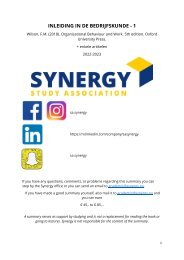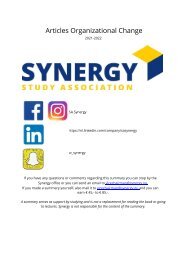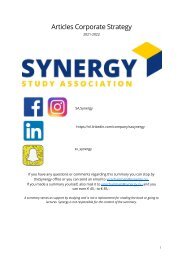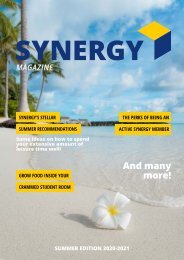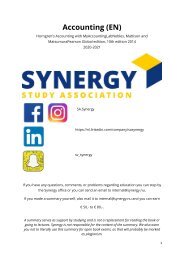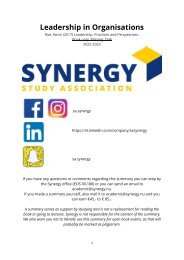You also want an ePaper? Increase the reach of your titles
YUMPU automatically turns print PDFs into web optimized ePapers that Google loves.
2. Exploratory <strong>and</strong> evaluation costs → Examples of some types of exploratory <strong>and</strong> evaluation<br />
(E&E) costs are as follows:<br />
- acquisition of rights to explore<br />
- topographical, geological, geochemical, <strong>and</strong> geophysical studies<br />
- exploratory drilling<br />
- sampling<br />
- activities in relation to evaluating the technical feasibility <strong>and</strong> commercial viability of extracting a<br />
mineral resource.<br />
Those who hold the full-cost concept argue that the cost of drilling a dry hole is a cost needed to<br />
find the commercially profitable wells. Others believe that companies should capitalize only the<br />
costs of the successful wells. This is the successful-efforts concept.<br />
3. Development costs → Companies divide development costs into two parts: (1) tangible<br />
equipment costs <strong>and</strong> (2) intangible development costs. Tangible equipment costs include all of<br />
the transportation <strong>and</strong> other heavy equipment needed to extract the resource <strong>and</strong> get it ready<br />
for market. Because companies can move the heavy equipment from one extracting site to<br />
another, companies do not normally include tangible equipment costs in the depletion base.<br />
Intangible development costs are such items as drilling costs, tunnels, shafts, <strong>and</strong> wells.<br />
Intangible development costs are considered part of the depletion base. Companies sometimes<br />
incur substantial costs to restore property to its natural state after extraction has occurred. These<br />
are restoration costs. Companies consider restoration costs part of the depletion base.<br />
Once the company establishes the depletion base, the next problem is determining how to<br />
allocate the cost of the mineral resource to accounting periods. Normally, companies compute<br />
depletion on a units-of-production-method.<br />
Sometimes companies need to change the estimate of recoverable reserves. This problem is the<br />
same as accounting for changes in estimates for the useful lives of plant <strong>and</strong> equipment. The<br />
procedure is to revise the depletion rate on a prospective basis: A company divides the remaining<br />
cost by the new estimate of the recoverable reserves.<br />
A company often owns as its only major asset a property from which it intends to extract mineral<br />
resources. If the company does not expect to purchase additional properties, it may gradually<br />
distribute to shareholders their capital investments by paying liquidating dividends, which are<br />
dividends greater than the amount of accumulated net income.<br />
When companies choose to fair value their long-lived tangible assets subsequent to acquisition,<br />
they account for the change in the fair value by adjusting the appropriate asset account <strong>and</strong><br />
establishing an unrealized gain on the revalued long-lived tangible asset. This unrealized gain is<br />
often referred to as revaluation surplus.<br />
How efficiently a company uses its assets to generate sales is measured by the asset turnover.<br />
This rate divides net sales by average total assets for the period. In comparing performance<br />
among companies based on the asset turnover, you need to consider the ratio within the context<br />
of the industry in which a company operates.<br />
Another measure for analysing the use of property, plant <strong>and</strong> equipment is the profit margin on<br />
sales (return on sales). Calculated as net income divided by net sales, this profitability ratio does<br />
not, by itself, answer the question of how profitably a company uses its assets. But by relating the<br />
profit margin on sales to the asset turnover during a period of time, we can ascertain how<br />
profitably the company used assets during that period of time in a measure of the return on<br />
26










